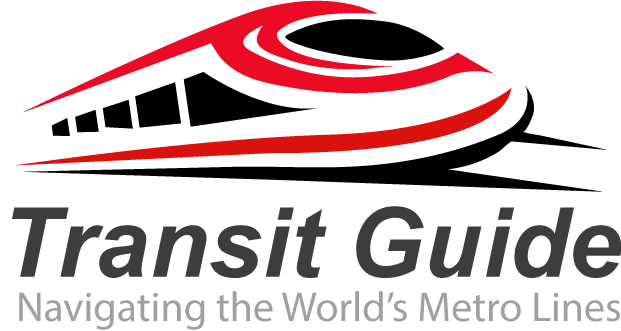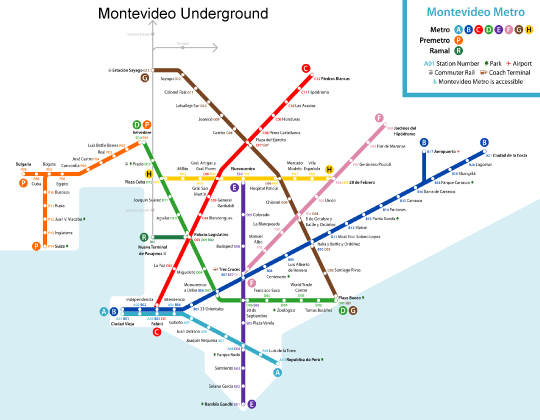Montevideo, Uruguay’s vibrant capital city, presents a unique case study in urban transportation and underground infrastructure. Unlike many major South American cities, Montevideo does not currently have a traditional subway or metro system, yet it boasts significant underground infrastructure that supports the city’s daily operations and cultural life.
The Reality of Montevideo’s Underground Infrastructure
Current Underground Systems
The only public transit is buses. There are no streetcars or subways. This statement reflects the current reality of Montevideo’s public transportation landscape. However, the absence of a subway system doesn’t mean the city lacks underground infrastructure entirely.
Initially, they wanted to hide all the infrastructure related to sanitation, so they put tunnels underneath each new street. Montevideo’s underground network primarily consists of extensive sanitation and utility tunnels that run beneath the city streets. These underground systems were developed as the city expanded, with infrastructure planners choosing to place essential utilities below ground to maintain the aesthetic appeal of the urban landscape above.
The Underground Cultural Scene
While Montevideo may lack a traditional metro system, the term “Underground Montevideo” has taken on cultural significance. Experience Montevideo’s vibrant arts and entertainment scene at Underground MVD. Despite its lack of direct metro ties, this underground hotspot contributes significantly to the city’s cultural richness with diverse events and activities. This cultural underground represents the city’s alternative arts scene, music venues, and cultural spaces that operate below the mainstream radar.
Why Montevideo Doesn’t Have a Metro System
Geographic and Economic Factors
Several factors contribute to Montevideo’s lack of a traditional subway system:
Population Density: With a metropolitan population of approximately 1.3 million people, Montevideo’s population density may not justify the massive infrastructure investment required for a comprehensive metro system.
Geographic Challenges: Subways are often unpractical South America because the overal surface is really really big, HUGE actually. The vast distances and lower population density across much of South America make subway systems less economically viable compared to bus-based transportation networks.
Economic Considerations: Building underground rail infrastructure requires enormous capital investment, which may be challenging for a country with Uruguay’s economic profile. The cost-benefit analysis often favors bus rapid transit systems over underground rail networks.
Current Transportation Infrastructure
Railway Network
All the Uruguayan lines start from Montevideo, connecting the cities of Paysandú, Salto, Rivera and Río Branco. Regular passenger services have been operated between Montevideo and 25 de Agosto (63km) since August 26, 1993. Uruguay maintains a limited but functional railway network that radiates outward from Montevideo to various cities across the country.
The rail system operates with only half of the network currently active, indicating the challenges faced in maintaining comprehensive rail infrastructure across the country.
Bus Transportation
I purchased an STM card (Sistema de Transporte Metropolitano) at an Abitab, which are all over. Montevideo’s primary public transportation relies on an extensive bus network managed through the STM (Metropolitan Transportation System). This bus network serves as the backbone of public transportation, connecting various neighborhoods and districts throughout the metropolitan area.
Future Transport Developments
Light Rail Projects
Recent developments suggest positive changes for Montevideo’s public transportation future. The national government elected in the autumn is to ‘carry to an end’ Montevideo’s proposed tram-train project by the end of its term. This commitment from President-elect Yamandú Orsi represents a significant step forward in modernizing the city’s transportation infrastructure.
The proposed light rail system would represent a hybrid approach, combining elements of traditional tram systems with modern train technology. This could provide many of the benefits of rapid transit without requiring the extensive underground construction of a full metro system.
The Fictional Metro Map Phenomenon
Interestingly, Montevideo has gained attention in urban planning circles for a different reason. The metro system now consists of a total of 12 lines, of which only two are actually underground. The Red Line tunnels its way from Plaza Matriz to Maroñas station, while the Green Line subterraneously transports you from Gaucho to Larrañaga. This description refers to a fictional metro map created as an artistic or academic exercise, highlighting what a comprehensive transit system might look like if it existed in Montevideo.
Underground Infrastructure Challenges
Water Management Systems
As the city grew, so did the water needs, but the pipes were never upgraded. One of the primary challenges facing Montevideo’s underground infrastructure is the aging water and sanitation systems. The original tunnel network, built to accommodate a much smaller population, now serves a city that has grown dramatically over the past decades.
Urban Resilience Projects
Recent initiatives focus on improving the city’s underground infrastructure to build urban resilience. Projects include upgrading underground water storage tanks and improving the overall capacity of subsurface systems to handle the demands of a modern metropolitan area.
Learning from Regional Examples
Buenos Aires Underground
The closest example of a comprehensive subway system in the region is Buenos Aires, Argentina. The first section of this network (Plaza de Mayo–Plaza Miserere) opened in 1913, making it the 13th earliest subway network in the world and the first underground railway in Latin America. Interestingly, there is even a station named “Uruguay” on Buenos Aires’s Line B, located at the intersection of Avenida Corrientes and Calle Uruguay, near to the Courthouse and in the middle of the city’s main theatre district.
Practical Information for Visitors and Residents
Getting Around Montevideo
For visitors and residents navigating Montevideo:
- Primary Transportation: Buses remain the main form of public transportation
- Payment System: The STM card can be purchased at Abitab locations throughout the city
- Cultural Underground: Explore the alternative arts and music scene in various underground venues
- Walking: Many areas of central Montevideo are pedestrian-friendly
Future Considerations
As Montevideo continues to develop, several factors will influence its transportation future:
- Population Growth: Continued urban growth may eventually justify more extensive rail infrastructure
- Environmental Concerns: Pressure to reduce emissions could accelerate light rail development
- Economic Development: Improved economic conditions could enable larger infrastructure investments
- Regional Integration: Transportation links with other regional cities may influence local transit decisions
Conclusion
While Montevideo may not have a traditional underground metro system like other major cities, it possesses a complex network of underground infrastructure that supports urban life in numerous ways. From sanitation tunnels to cultural spaces, the “underground” of Montevideo serves essential functions for the city’s residents and visitors.
The commitment to developing light rail infrastructure represents an exciting opportunity for the city to modernize its transportation network while potentially incorporating underground elements in the future. As urban planners and government officials work toward implementing these new systems, Montevideo may well develop its own unique approach to rapid transit that reflects the city’s character and needs.
For now, visitors and residents can appreciate both the practical underground infrastructure that keeps the city functioning and the vibrant cultural underground that contributes to Montevideo’s distinctive urban character. The future may bring expanded underground transportation options, making the fictional metro maps of today a reality for tomorrow’s commuters.

